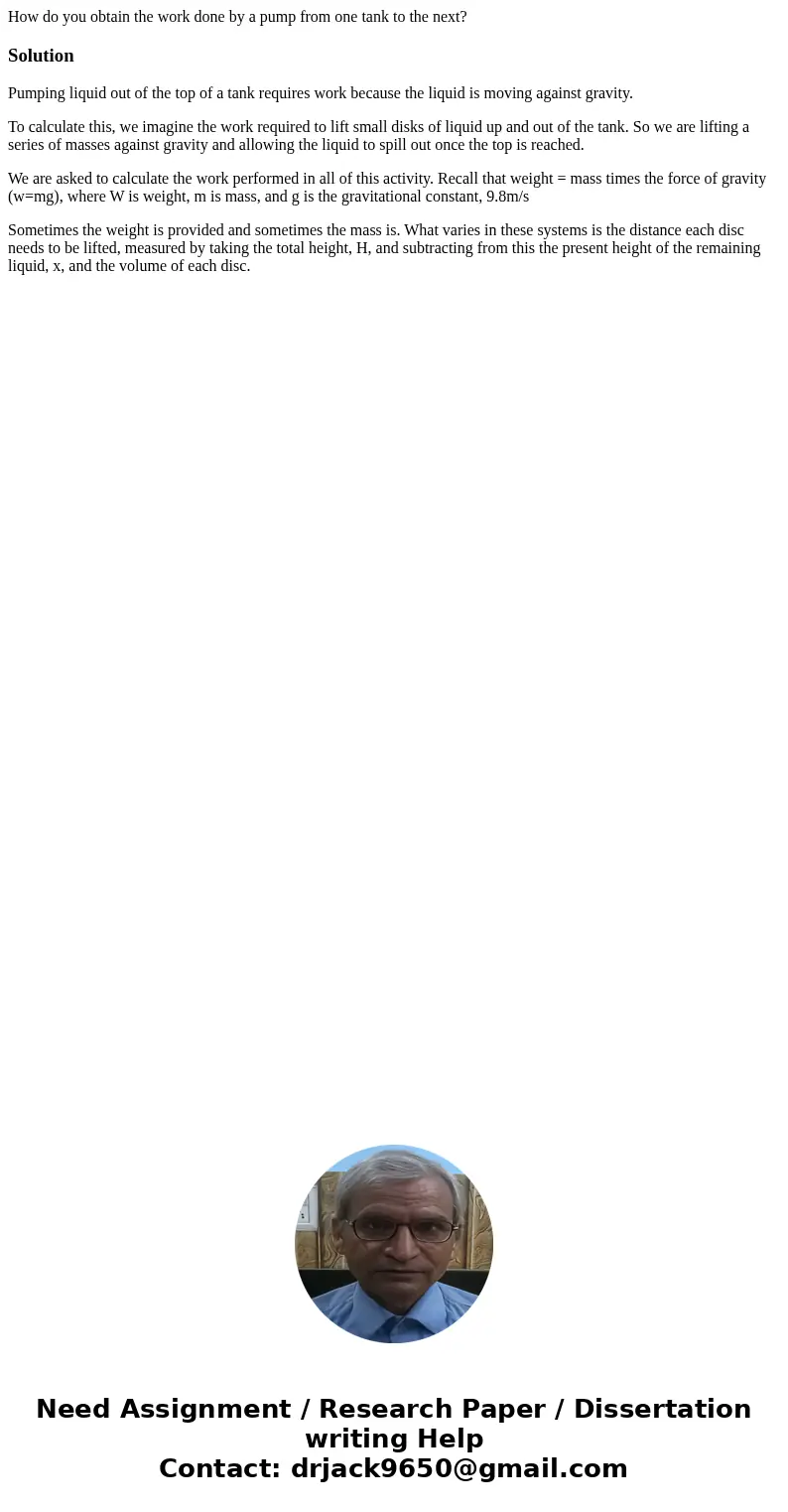How do you obtain the work done by a pump from one tank to t
How do you obtain the work done by a pump from one tank to the next?
Solution
Pumping liquid out of the top of a tank requires work because the liquid is moving against gravity.
To calculate this, we imagine the work required to lift small disks of liquid up and out of the tank. So we are lifting a series of masses against gravity and allowing the liquid to spill out once the top is reached.
We are asked to calculate the work performed in all of this activity. Recall that weight = mass times the force of gravity (w=mg), where W is weight, m is mass, and g is the gravitational constant, 9.8m/s
Sometimes the weight is provided and sometimes the mass is. What varies in these systems is the distance each disc needs to be lifted, measured by taking the total height, H, and subtracting from this the present height of the remaining liquid, x, and the volume of each disc.

 Homework Sourse
Homework Sourse